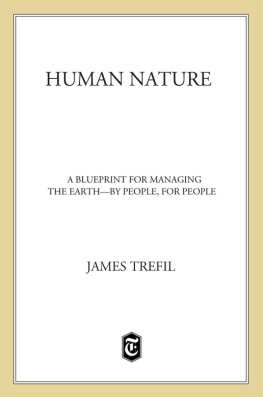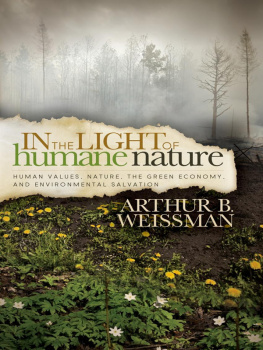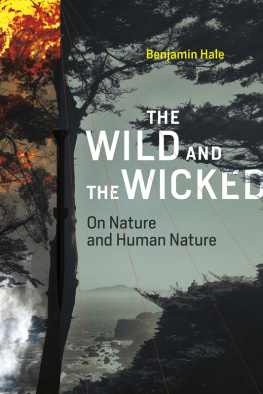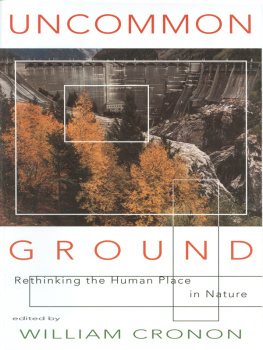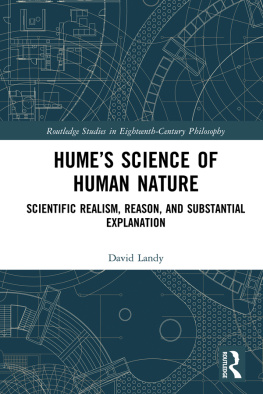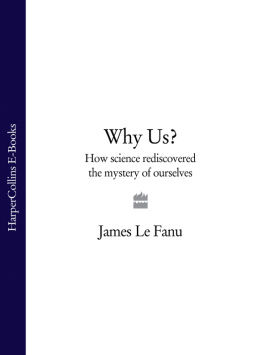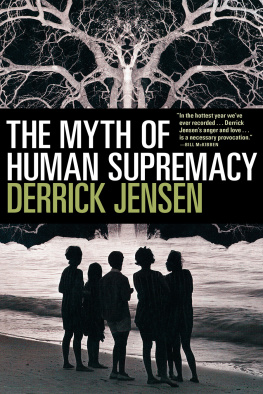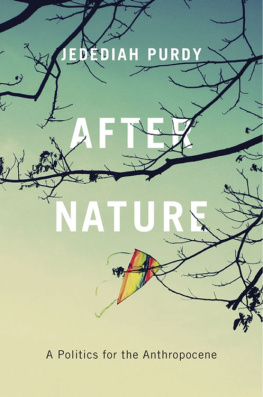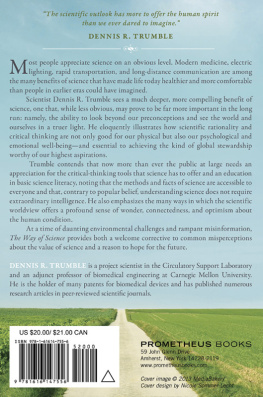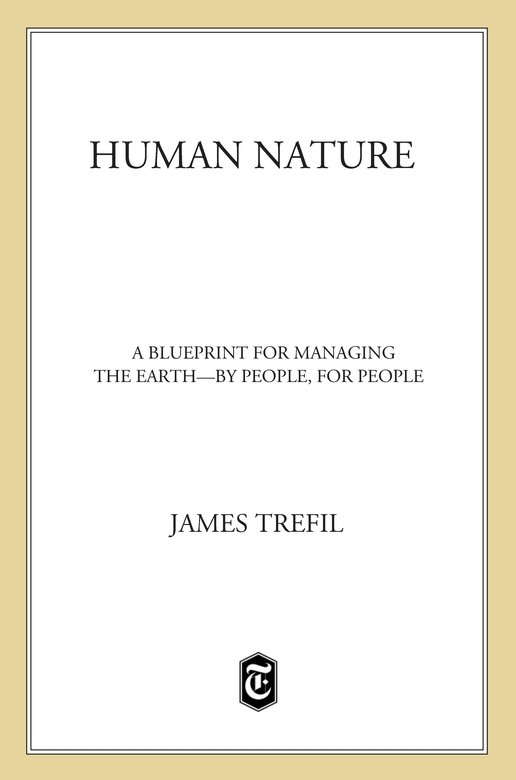James Trefil is the Clarence J. Robinson Professor of Physics at George Mason University. He has been a contributor to Smithsonian and Astronomy magazines and a frequent commentator for National Public Radio. He is the author or editor of over thirty books, including Are We Unique? and the bestselling Dictionary of Cultural Literacy . A fellow of the World Economic Forum and a Phi Beta Kappa visiting scholar, he lives in northern Virginia.
Where Do We Fit In?
It was a beautiful day in the Black Hills, one of those days when the sky was so blue and the grass was so green that it just made your teeth ache. My wife and I had pulled into the dirt parking lot at the trailhead and were getting our hiking gear out of the trunk of our car. Suddenly, two rather agitated park workers came running up the trail. Watch out, they said, theres a bull buffalo coming.
And there he was, ambling slowly along the side of the hill. Not deigning to notice the wondering humans, the buffalo strolled by, grazing on the lush grass. He was big, probably near a ton in weight, and we could see the muscles rippling along his back and flanks. The deep brown of his fur contrasted with the dark tree trunks along the trail; the black of his face almost matched them. Being sure to stay behind our car, we watched as he moved along the side of the parking lot and on down the trail we were planning to hike. At that moment, with the sun shining on that magnificent beast, I experienced a feeling that is probably familiar to most modern urbanites. It was a feeling of rightness, a feeling that somehow, in this experience, I was seeing the world as it ought to be, as it would be if only humanity had not decided to pursue technology and had stayed in communion with nature.
We waited about ten minutes, then started out on our hike, following the direction the buffalo had taken. Our paths seemed to move in parallel that day, and throughout the afternoon we kept an eye on our buffalo friend, being sure to keep at least two city blocks between us. My wife decided that I had earned an Indian nameWalks With Buffalo. (My own suggestionRuns Like Hell From Buffalowas summarily rejected.) But as the afternoon wore on, I kept coming back to that initial reaction, that purely emotional response to being in contact with an aspect of nature thats not part of everyday experience. And as I mulled it over, I began to realize that I had stumbled onto an important dilemma that faces modern humansthe dilemma of being part of nature, yet not being part of it at the same time.
After all, here I was, driving up to a trailhead in South Dakota in a car that is a technological achievement of the first order. The power in that cars computers probably exceeds the power of the primitive computers I used to write my Ph.D. thesis more years ago than I care to remember. I was wearing hiking boots that were marvels of the engineers art, and protecting my skin with sun block created in a major chemical factory. And to what end was I applying all this technology? To go out and spend a day far from anything engineered or constructed by human beings, to get in touch with nature. I, along with the dozens of hikers sharing the trails with me that day, was using what science and technology had produced to escape from that very same science and technology.
I am, of course, not alone in having these sorts of contradictory feelings about the world we share. Most of us want to live comfortably, enjoying climate-controlled homes and traveling about freely in private cars. At the same time, we dont want to confront the pollution attendant on drilling for oil or burning coal. We love getting away to places like the Black Hills to camp and hike and live a simple life, but were also very happy to get back to our urban homes, with a coffee shop around the corner and all the conveniences of civilization at our beck and call. We love hiking through old-growth forests, but a stroll down Fifth Avenue also ranks pretty high on our list of favorite activities. Tons of ink have been spilled by writers trying to convince us that one or the other of these tendenciescivilization or natureis antithetical to the good life, or to morality, or to common sense.
But the more I thought about it, the more I began to entertain a heretical thought. What, I wondered, if both of these types of activities are profoundly in tune with human nature? What if we are, in fact, creatures equally at home in the quiet of a wilderness area and the hurly-burly of the city? What if both the beauty of a deserted beach and the Lake Michigan shoreline, in the shadow of Chicagos skyscrapers, are places where we belong? What if, in other words, there is no essential conflict between our need for technology and our need to seek renewal in its absence? What if our ability to create unnatural technologies is, in fact, the most natural thing we can do?
For there is no question, from a scientific point of view, that human beings are an integral part of the great web of life that exists on our planet. Like every other living thing, we are one result of a great experiment in molecular biology that began four billion years ago in the warm waters of the Earths oceans, when life first appeared on our planet. We depend on the workings of the great web of life that surrounds us for all of our necessitiesthings like clean air, clean water, and the food we eat.
The more I thought about this question, the more I realized that there was another aspect to it. Yes, human beings are part of life on our planet, but we have also had a profound effect on the workings of the planet as well. In fact, if you think about nature as something that happens in the absence of human beings, then nature has largely disappeared from the Earth. The air that buffalo and I were breathing in the Black Hills that day, for example, was loaded with molecules produced by human activities on all of the planets continents. The same is true of the water we drank, the weather we experienced, and the food we ate. Nature has become, in a very real sense, human.
So there can be no questioning the fact that we are somehow different from other living things. There are many dimensions of this difference, but the ability to understand the world around us in abstract terms (what we call science) and the ability to use that understanding to change the environment in which we live (what we call technology) is surely one of the most important. If an extraterrestrial were to visit Earth, the first thing it would notice is that there is one species Homo sapiens that dominates the environment, changing it to meet the needs of the species. Humans just arent like everything else.
It is this dualitythis being in nature but not being in naturethat is at the root of what was bothering me out there in South Dakota. There are many ways of expressing the duality: where we come from versus where were going, how were the same versus how were different, how we depend on the global ecosystem versus how we control it, and so on. But to understand what all of this means to us today, we have to step back and take a broader view of both sides of the equation, of both humanity and nature.

